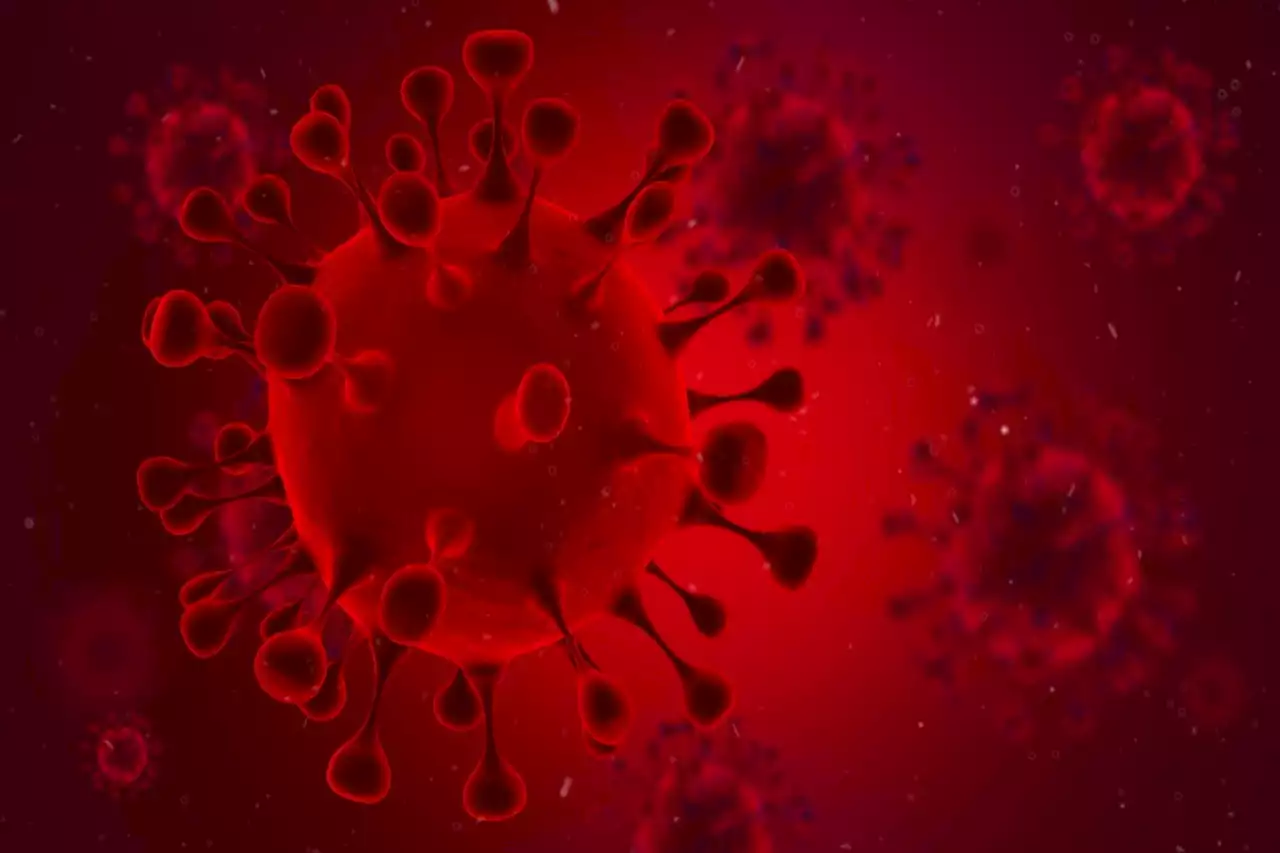Study suggests BA.5 evolved to induce enhanced inflammation when compared to prior Omicron subvariants biorxivpreprint HokkaidoUnivPR Omicron coronavirus covid COVID19 SARSCoV2 inflammation evolution
By Neha MathurAug 9 2022Reviewed by Danielle Ellis, B.Sc. In a recent study posted to the bioRxiv* preprint server, researchers evaluated the comparative pathogenicity of severe acute respiratory syndrome coronavirus 2 Omicron sub-variants BA.1, BA.2, and BA.5, in vitro and in vivo.
About the study In the present study, researchers characterized virological characteristics of Omicron sub-variant BA.5 in vitro and in vivo in parallel with its predecessors BA.1 and BA.2; they used an early pandemic B.1.1 isolate containing D614G mutation as the control. For characterizing in vitro growth kinetics of Omicron sub-variants, they used three cell lines viz., VeroE6/ transmembrane protease, serine 2 , Calu-3, and induced pluripotent stem cell-derived alveolar epithelial cells.
Lastly, to investigate the ability of Omicron sub-variants to cause inflammation in animal lungs, the researchers performed histopathological scoring. The method evaluated bronchitis, hemorrhage, alveolar damage with epithelial apoptosis, macrophage infiltration, and hyperplasia of type II pneumocytes. They also examined inflammatory response upon infection with Omicron sub-variants in vivo.
In a hamster model, the dynamics of weight changes of BA.5-infected animals were significantly different from that of the BA.2-infected and uninfected hamsters. Moreover, in BA.1-, BA.2- and BA.5-infected hamsters, the Penh value was significantly lower, and the Rpef value was substantially higher than those in B.1.1-infected hamsters. Although lower than B.1.1, among Omicrn sub-variants, BA.5 caused the most severe inflammation. Additionally, BA.
Ireland Latest News, Ireland Headlines
Similar News:You can also read news stories similar to this one that we have collected from other news sources.
 Leeds M621 motorway to shut for 12 straight nights in August as major roadworks beginThe M621 motorway in Leeds is set to close for 12 straight nights this month as major roadworks get underway.
Leeds M621 motorway to shut for 12 straight nights in August as major roadworks beginThe M621 motorway in Leeds is set to close for 12 straight nights this month as major roadworks get underway.
Read more »
 How can we map the human genetic architecture of COVID-19 across all ancestry groups?In a new study, researchers formed the COVID-19 host genetics initiative to compile a genome-wide association meta-analysis of 60 studies from 25 countries.
How can we map the human genetic architecture of COVID-19 across all ancestry groups?In a new study, researchers formed the COVID-19 host genetics initiative to compile a genome-wide association meta-analysis of 60 studies from 25 countries.
Read more »
 Joining mass boycott against paying energy bills could damage your credit score, experts warn'If people aren't fully informed and induced into doing it thinking there is going to be safety in numbers, then I fear for them', a solicitor has said
Joining mass boycott against paying energy bills could damage your credit score, experts warn'If people aren't fully informed and induced into doing it thinking there is going to be safety in numbers, then I fear for them', a solicitor has said
Read more »
 Association between CYP metabolizer phenotypes and selective serotonin reuptake inhibitors induced weight gain: a retrospective cohort study - BMC MedicineBackground Prescription medications such as selective serotonin reuptake inhibitors (SSRIs), commonly used to treat depression, are associated with weight gain. The role of pharmacogenomics in predicting SSRI-induced weight gain is unclear. Methods In this retrospective cohort study from participants in the Mayo Clinic RIGHT study who were prescribed citalopram, paroxetine, sertraline, or fluoxetine, our aim was to evaluate the association of metabolizer phenotype and total body weight after 6 months of SSRIs initiation. We evaluated the metabolizer phenotypes (poor/intermediate, normal, and rapid/ultra-rapid) of the cytochromes P450 enzymes genes: CYP2C9, CYP2C19, and CYP2D6 known to influence the metabolism of SSRI medications: CYP2C19 for citalopram, CYP2D6 for paroxetine, CYP2D6 and CYP2C19 for sertraline, and CYP2D6 and CYP2C9 fluoxetine. In addition, we assessed the association of metabolizer phenotype and total body weight change at six months following SSRI prescription using parametric analysis of covariance adjusted for baseline body weight and multivariate regression models. Results CYP2C19 poor/intermediate metabolizers prescribed citalopram gained significantly more weight than normal or rapid/ultra-rapid metabolizers at 6 months (TBWG %: 2.6 [95% CI 1.3—4.1] vs. 0.4 [95% CI -0.5 – 1.3] vs. -0.1 [-95% CI -1.5—1.1]; p = 0.001). No significant differences in weight outcomes at six months of treatment with paroxetine, sertraline, or fluoxetine were observed by metabolizer status. Conclusions Weight gain observed with citalopram may be mediated by CYP2C19 metabolizer status.
Association between CYP metabolizer phenotypes and selective serotonin reuptake inhibitors induced weight gain: a retrospective cohort study - BMC MedicineBackground Prescription medications such as selective serotonin reuptake inhibitors (SSRIs), commonly used to treat depression, are associated with weight gain. The role of pharmacogenomics in predicting SSRI-induced weight gain is unclear. Methods In this retrospective cohort study from participants in the Mayo Clinic RIGHT study who were prescribed citalopram, paroxetine, sertraline, or fluoxetine, our aim was to evaluate the association of metabolizer phenotype and total body weight after 6 months of SSRIs initiation. We evaluated the metabolizer phenotypes (poor/intermediate, normal, and rapid/ultra-rapid) of the cytochromes P450 enzymes genes: CYP2C9, CYP2C19, and CYP2D6 known to influence the metabolism of SSRI medications: CYP2C19 for citalopram, CYP2D6 for paroxetine, CYP2D6 and CYP2C19 for sertraline, and CYP2D6 and CYP2C9 fluoxetine. In addition, we assessed the association of metabolizer phenotype and total body weight change at six months following SSRI prescription using parametric analysis of covariance adjusted for baseline body weight and multivariate regression models. Results CYP2C19 poor/intermediate metabolizers prescribed citalopram gained significantly more weight than normal or rapid/ultra-rapid metabolizers at 6 months (TBWG %: 2.6 [95% CI 1.3—4.1] vs. 0.4 [95% CI -0.5 – 1.3] vs. -0.1 [-95% CI -1.5—1.1]; p = 0.001). No significant differences in weight outcomes at six months of treatment with paroxetine, sertraline, or fluoxetine were observed by metabolizer status. Conclusions Weight gain observed with citalopram may be mediated by CYP2C19 metabolizer status.
Read more »
 Britney Spears hits back at ex's tell-all and 'hurtful' parenting claimsThe star's husband Sam Asghari suggested Kevin's motives were financial and his 'gravy train' was ending.
Britney Spears hits back at ex's tell-all and 'hurtful' parenting claimsThe star's husband Sam Asghari suggested Kevin's motives were financial and his 'gravy train' was ending.
Read more »
The Prevalence of Gender-Diverse Youth in a Rural Appalachian RegionPrevalence of gender-diverse youth in ruralAppalachia exceeds previous estimates, study shows JAMAPeds
Read more »
